Mea Culpa
“Mea culpa” is a Latin expression that literally means “through my fault.” In the "What’s Happening Here?" section of the last newsletter, I asked you to email me your ideas as to what you thought was happening with the echinacea in the images I shared. The only problem is I provided an email that doesn’t even exist.
If you tried responding last time and received error messages or kept getting your responses bounced back to you, I apologize. There's no one to blame but myself.

I inadvertently meshed the first part of my Ball Publishing email with the second part of my Perennial Solutions Consulting mail, which resulted in an email that doesn’t exist. My bad. As you can imagine, I didn’t receive the number of responses I expected, therefore, I’m going to extend the opportunity for you to play the diagnostic challenge.
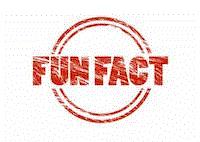 |
I actually took a year of Latin in college.
|
What’s Happening Here?—The Reprise
Here’s the diagnostic challenge I showed in the last newsletter:
To recap, one of our real-life Perennial Pulse subscribers sent these images to me and asked if I could share them with you to see if you could help determine the cause of the weird discoloration on the echinacea flower petals.
As I mentioned above, I provided the wrong email last time, but here are some of the responses that did manage to cross my inbox:
-
Boron deficiency
-
Environmental response
-
Herbicide injury
-
High temperatures
-
Mutation
-
Physiological stress
-
Phytotoxicity
-
Pigment synthesis interruption
-
Plant growth regulators—during flower formation
-
Sunscald due to dry conditions
-
Systemic disease
-
Thrips damage—during early flower development
-
Unusual type of aster yellows/phytoplasma
-
Viroid (Chrysanthemum stunt)
-
Virus (Cucumber Mosaic, Bidens mottle)
As you can see, I’ve already received a number of good responses. Please let me know if you agree with some of these possibilities or if you have other ideas. It’s time for me to ask, “What’s Happening Here?”
To make sure I’ll receive your responses, I’ve triple checked this e-mail: ppilon@ballpublishing.com. And it is working properly.
Thanks for your patience if you had difficulties responding last month and thanks in advance for your help solving this perennial dilemma.

Perennial Highlights
Last month, I attended the “Meet Your New Favorites: New Plant & Products Review.” This was a virtual experience (I think that’s a fancy name for webinar) the Perennial Plant Association (PPA), in partnership with the Southern Nursery Association (SNA), held a couple weeks ago. I wanted to share a few perennials that caught my attention duirng the virtual event.
Salvia Blue by You
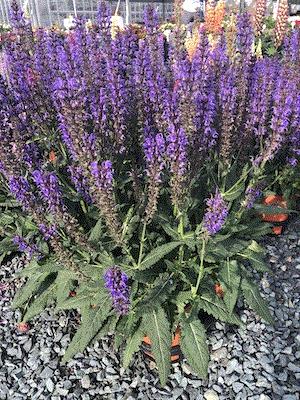 |
-
Marketed by Darwin Perennials
-
This is a hybrid between Salvia nemorosa and S. pratensis
-
Flowers two weeks earlier than the industry standard May Night
-
Produces attractive long, bright blue flower spikes
-
Re-flushes quickly—up to five times per season
-
Hardy to Zone 4
-
Winner of the Far West Show Retail Award in 2020
|
Echinacea Yellow Rainbow Marcella
-
Marketed by Plants Nouveau
-
One-of-a-kind yellow flowers with red halos surrounding the cones
-
Flowers don’t fade to white in the sun
-
Member of the popular Butterfly series
-
Hardy to Zone 5
|
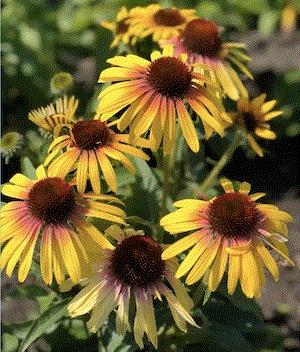 |
Spigelia Rajin Cajun
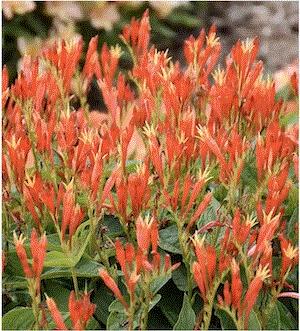 |
-
Marketed by Walters Gardens
-
This cultivar is more reddish-orange compared to the deep red of Little Redhead
-
Floriferous—up to 30% more flowers than the species
-
Very vigorous with wide, dark green leaves
-
Hardy to Zone 5
|

A Few More …
Astilbe Moccachino
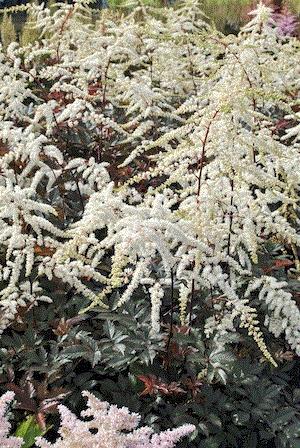 |
-
Marketed by DeVroomen Flower Bulbs & Perennials
-
Stunning chocolate, deeply divided foliage
-
Foliage color changes to bronze
-
Attractive creamy-white arching flowers
-
Hardy to Zone 3
|
Delphinium Delgenius
-
Marketed by Pacific Plug & Liner
-
Exciting new line of delphinium from tissue culture
-
Three cultivars available
-
Full, multi-branched habit in a short amount of time
|
-
Multiple semi-double blooms on strong stems
-
Reblooms if cut back
-
Good heat tolerance
-
Hardy to Zone 3
|
Heuchera Black Forest Cake
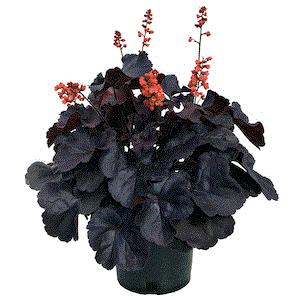 |
-
Marketed by Terra Nova Nurseries
-
Smooth, dark chocolate foliage
-
Nearly identical to the top selling cultivar Obsidian except for the bright, cherry-red flowers
-
Heavy flowering with great color contrast
-
Tolerates high heat and high light
-
Hardy to Zone 4
|
PPA Announcements
Since the virtual webinar, the Perennial Plant Association made a couple of noteworthy announcements.
New PPA Logo
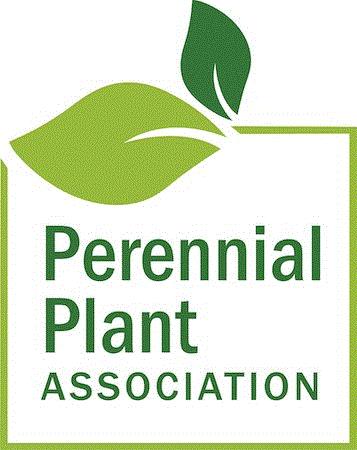
The PPA announced and released a new modern logo that reflects the energy and professionalism of the perennial plant industry that it represents. The logo was designed by the very talented designer Alex Stanley-Stretch at Hoffman Nursery. PPA members will begin to notice the new logo in the coming weeks on the website and in its newsletter.
2021 Perennial of the Year
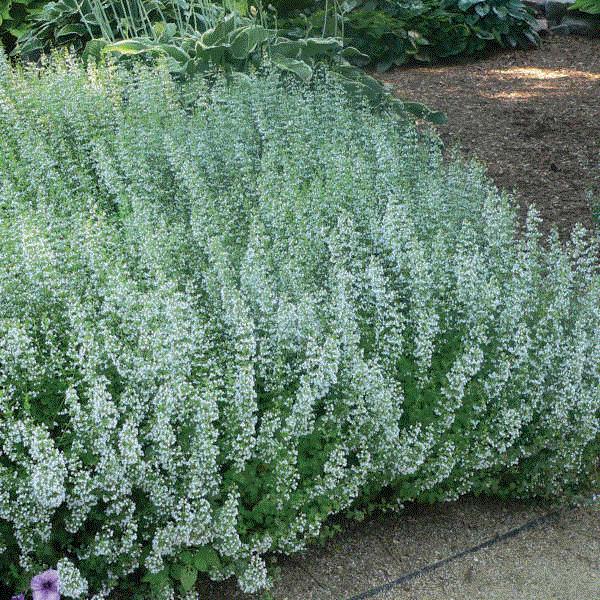
Photo credit: Florensis
The Perennial Plant Association also announced its selection of Calamintha nepeta ssp. nepeta for the 2021 Perennial Plant of the Year. I don’t know if you’re familiar with this perennial or not, but it definitely has a place in the landscape. It blooms for a long time—early summer until frost. The plant covers itself with tiny, white flowers and is great for attracting pollinators into gardens. Garden enthusiasts will also enjoy the mint scent of the leaves. Hardy to Zone 5.
Click HERE to learn more about the 2021 Perennial Plant of the Year.

The 2021 Insecticide, Miticide and Fungicide Guide
The new 32-page Insecticide, Miticide and Fungicide (IMF) guide from GrowerTalks (generously sponsored by BASF) has been released and is now available.
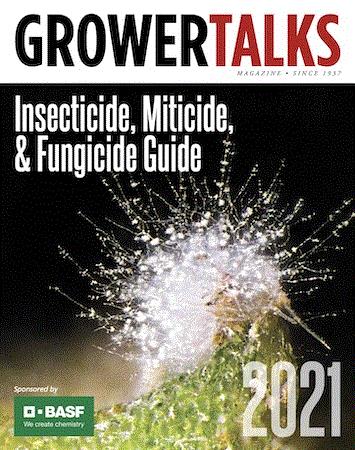
The IMF guide not only contains updated pest management tables, but this invaluable reference contains some great editorial from several industry experts (including an interview by me). Here’s a rundown of the content in this year’s guide:
-
Managing Black Root Rot—Janna Beckerman, Purdue University
-
Talking Pests—Paul Pilon, Perennial Solutions Consulting
-
Dealing with Spider Mites—Suzanne Wainwright-Evans, Buglady Consulting
-
Pioneers of Plant Health—Dr. Emma Lookabaugh, BASF
-
2021 Pest Control Materials for Managing Insect and Mite Pests of Greenhouse-Grown Horticultural Crops—Raymond A. Cloyd, Kansas State University
-
Suggested Rotations by Key Diseases
-
Products Registered for Use with Ornamental Vegetable Transplants and Greenhouse Vegetable Production
-
Chemical Class Chart for Ornamental Fungicides
-
Building Better Rotations: Timing Pre-emergence Herbicide Applications When They Benefit You Most—Dr. Chris Marble, UF/IFAS Mid Florida Research & Education Center
-
So You Need a Post-emergence Herbicide Treatment—Dr. Katelyn Venner, BASF
As you can see, there's a ton of information in this FREE 32-page resource. Be sure to check out the September 2021 GrowerTalks to get a hard copy of this guide. If you're interested in a digital copy, I've got that covered, too. Download your copy of the 2021 GrowerTalks Insecticide, Miticide & Fungicide Guide by clicking HERE.




Before I sign off, I wanted to remind you that fall is an excellent time of year to plant perennials. I encourage you to find ways to promote the benefits of planting perennials in the fall. Be sure to check out the National Garden Bureau’s Victory Garden 2.0 #FallisforPlanting Perennials initiative.
Thanks for reading this edition of Perennial Pulse. My email is ppilon@ballpublishing.com if you have any comments or suggestions.
Take care,
Paul Pilon
Editor-at-Large - Perennial Pulse
Perennial Consultant - Perennial Solutions Consulting
This email was received by you and 30,788 other fine subscribers!
If you're interested in advertising in Perennial Pulse, contact Kim Brown ASAP and she'll hook you up.